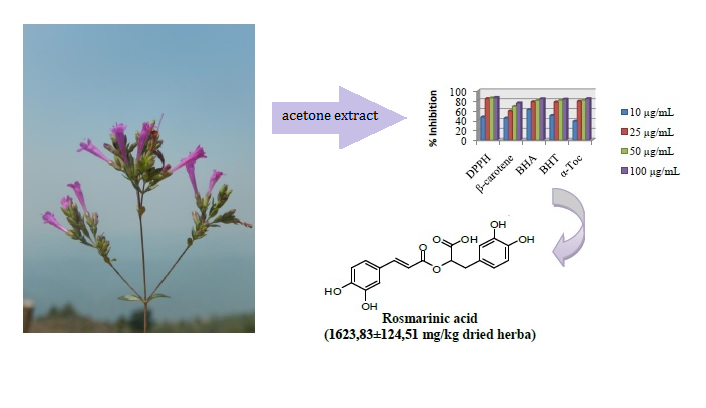JOURNAL 1115
Journal of Chemical Metrology
Year: 2018 Issue: 2 July-December
p.121 - 127
Viewed 3588 times.
GRAPHICAL ABSTRACT

ABSTRACT
In this study, quantities of some phenolics; caffeic acid, (E)-ferulic acid, rosmarinic acid, chlorogenic acid, fumaric acid, gallic acid, pyrogallol and vanillin in the directly methanol (M1), chloroform (C), acetone (Ac) and methanol (M2) extratcs obtained from Origanum laevigatum Boiss. from Turkey were investigated via liquid chromatography and tandem mass spectrometry (LC-MS/MS). Curcumin was used as an internal standard. Caffeic acid, chlorogenic acid, rosmarinic acid and gallic acid were determined as the most abundant phenolic acids in the studied extracts using LC-MS/MS. In LC-MS/MS measurements relative standard deviations (RSD %) for caffeic acid, (E)-ferulic acid, rosmarinic acid, chlorogenic acid, fumaric acid, gallic acid, pyrogallol and vanillin were found to be 8.04, 5.21, 5.45, 3.73, 5.44, 4.85, 5.47 and 6.57 % respectively. For the investigated analytes, the correlation coefficient was found in the range of 0.9803 to 0.9981. Furthermore, antioxidant properties of the extracts were determined based on 2,2-diphenyl-1- picrylhydrazyl (DPPH), β-carotene linoleic acid and cupric (Cu2+) ion reducing power assay (CUPRAC). Acetone (Ac) and methanol (M2) extracts showed high activity in all test assays due to their high concentration of rosmarinic acid, caffeic acid and gallic acid in the extracts.
KEYWORDS- Origanum
- phenolics
- LC-MS/MS
- validation
- antioxidant activity
- rosmarinic acid